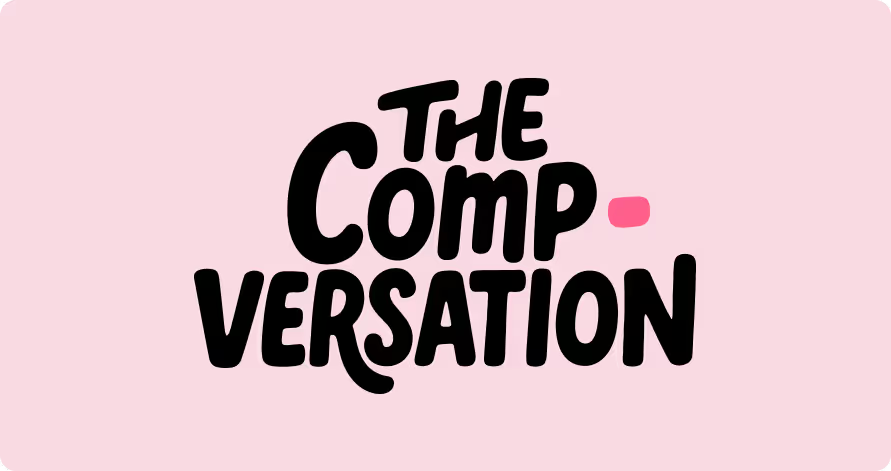How to measure employee potential
My top HR prediction for the year ahead won’t come as a surprise to readers of this newsletter: a shift towards greater transparency. The EU Pay Transparency Directive must be transposed into national law by 7 June 2026 at the latest. That doesn’t leave businesses with very long to bring clarity to their pay decisions — which must be based on objective, measurable criteria.
But that’s far from the only challenge on the horizon.
The job market remains tight, and HR teams must find ways to identify and retain top talent — those whose contributions have a disproportionate impact on results — all while remaining objective and fair. That means looking beyond past performance and making predictions about how employees will perform in the future. In other words, finding and nurturing the stars of tomorrow before they slip through the net.
That’s the idea behind the concept of ‘potential’. When we measure potential, we’re not just thinking about what employees are today, but who they could become tomorrow. The goal is to anticipate growth and identify those who might step into a strategic role two, five, or even ten years down the line.
Today, many organisations use this notion of ‘potential’ to make managerial decisions — and compensation decisions too. This might mean allocating a specific pay increase budget for high-potential employees, or rewarding them with bonuses, shares or stock options. And, while we don’t yet know for sure whether equity will come under the remit of the EU Directive in every country, bonuses and pay rises definitely will.
Companies that factor potential into pay decisions but aren’t transparent about how they measure it could soon find themselves facing legal challenges.
9 boxes, 0 objectivity
HR work would be far simpler if we could accurately predict employees’ future behaviour and performance. We’d know exactly who to invest in, and our high-potential programmes could become guaranteed incubators for future leaders.
So it’s no surprise that around 50% of companies measure potential in one way or another — as we found in a survey of participants at last year’s Compensation Summit. One of the most talked-about methods is the 9-box grid. This tool plots employees into nine categories based on two factors: their potential and their current performance.
The idea is to identify those we want to engage and invest in (high performance, high potential), those who may need more training (high potential, low performance), and those we might not promote but are happy to keep on the team (low potential, high performance).
But despite its structured appearance, the 9-box grid simply moves the problem further along: how do we decide where to place each employee on the ‘potential’ axis? What criteria should we use? And most importantly, if the existence of this 9-box grid became public tomorrow, could the company justify it to employees and their representatives?
If the answer is no, this method shouldn’t be used to inform compensation decisions.
Personally, I’ve never seen the 9-box grid used with true clarity, precision or method. In practice, it simply involves asking managers which employees have some potential, which have a lot, and which have none at all. These judgments are rarely scientific or grounded in objective facts — and are therefore wide open to bias.
To give an example, managers will often take an employee’s diploma into account — even when the person in question left school more than ten years ago. I’ve never been convinced that academic credentials are a solid indicator of potential after years of professional experience, and I quickly became disillusioned with these unstructured, bias-prone assessments. In my final years in HR, I abandoned them altogether — and I’ve seen many of my peers do the same.
This isn’t a new problem: back in 2014, a report from SHL found that 50% of HR professionals lacked confidence in their ‘high potential’ programmes. Ten years later, in 2024, another report from SAP revealed that 30% of employees considered their company’s way of measuring potential to be ‘unfair’.
These figures are worrying — and even more so in the transparency era.
After all, even seemingly objective tools like performance reviews can be problematic. Most HR professionals now agree that calibrating performance ratings is essential to ensure consistency. Yet I don’t see the same consensus or sense of urgency when it comes to assessments of potential — even though there’s clearly a lot of room for improvement.
A fair way to evaluate potential?
So, should we abandon employee potential assessments altogether? For a long time, I thought so — until a recent conversation with a Figures client made me reconsider.
This company evaluates potential by scoring employees on three specific abilities:
- Learning new skills
- Taking initiative and following through
- Communicating and bringing people together
Here, ‘potential’ isn’t a vague, subjective idea — it’s linked to concrete behaviours that can be observed and demonstrated through actions.
This is the way the scientific research is moving, too. In a 2017 Harvard Business Review article, three experts, including a professor of organisational psychology, identified three qualities shared by future leaders: cognitive ability, social skills and drive.
In 2022, the same publication shared a second article on the topic: this time, the focus was a study conducted over nearly five years, showing that future leaders can be spotted by looking at three quotients: cognitive, drive, and emotional.
Even better, the researchers recommended assessing these quotients through observable behaviours — a crucial step towards objectivity.
Putting potential in context
These two articles offer some interesting avenues to explore as we look to accurately measure potential. But what has always bothered me about this concept is its all-or-nothing framing — you either have potential, or you don’t.
To determine which camp employees fit into, managers are often asked whether they think a team member will move up the company ladder in the next two or five years… without ever asking, potential for what?
This approach doesn’t account for the fact that there are different types of potential. The skills that make a great manager are not the same as those that define an outstanding technical expert, for example. In a white paper, Lauren S. Park, PhD, a researcher at SAP, offers a broader model that also includes social, organisational and project potential.
She emphasises that companies should adapt this framework to their strategic priorities, industry context and core values.
The key is to have a clear understanding of what ‘potential’ means for each company and team. That means asking ourselves what skills and behaviours we want to encourage. In a growing company, that might be agility, while those looking to innovate put more emphasis on technical expertise.
By linking potential to observable skills and abilities demonstrated today — and aligning them with strategy — we can turn a vague concept into something concrete enough to inform pay decisions.
As is often the case when it comes to building a compensation policy, this is ultimately a strategic decision: should compensation be based on employees' theoretical future development, or proven past performance?
Either way, fairness and objectivity are non-negotiable, especially when pay is on the line.
To continue the conversation
Here’s some reading to keep the conversation ongoing on this topic. If you’ve come across any interesting reads, feel free to send them my way!
How to Spot — and Develop — High-Potential Talent in Your Organization — James Intagliata, Jennifer Sturman and Stephen Kincaid, Harvard Business Review
Three talent management specialists share the results of their research on potential assessments based on three distinct qualities. Using this model, it’s also possible to train future leaders if they are falling short on one of the three.
Pay transparency policies can reduce the gender pay gap: The case of Denmark and the United Kingdom — Alexis Koumjian Cheney, World Bank
A blog post on the World Bank website examining the impact of transparency on gender equality in Denmark and the UK.
Summarize this article with AI
No time to read it all? Get a clear, structured, and actionable summary in one click.


.avif)

